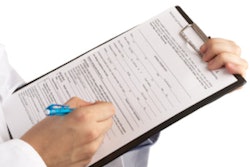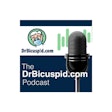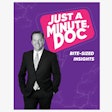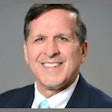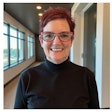
Since medical care in the U.S. began using diagnostic coding comprehensively about 15 years ago, dentists have periodically asked when something similar will be required in dentistry. Universal use is still very likely years away because of the need to reprogram claims systems and electronic record systems.
However, depending on the practice, most dentists are already using diagnostic coding in limited ways, and increasing numbers of clinics are using it more frequently, if sales of diagnostic coding and cross-coding tools for dentistry are an indicator.
Pros and cons
Dental clinics are generally using diagnostic codes when assisting patients to obtain benefits under their medical/health plans. Dental schools are using these codes as a method for teaching diagnosis. Still others, such as the military and some dental groups, are using them for a variety of other reasons.
 Mark Jurkovich, DDS, MBA.
Mark Jurkovich, DDS, MBA.Proponents would say that diagnostic coding improves documentation, record keeping, intra- and interdisciplinary communications, understanding of disease processes, and development of decision support tools. Further, proponents also believe that regular use could lead to greater clinical understanding, helping clinicians provide superior and more individualized care.
Others express reservations about the use of diagnostic codes. They are concerned about insurance companies using diagnosis codes to limit the types of procedures a dentist might provide or recommend for a patient. They suggest that this could adversely impact reimbursement and patient decision-making. There is also concern that it could complicate clinical workflows and reduce efficiency.
These opportunities and concerns, along with others not mentioned, have merit. However, using the enormous amounts of information and correlations these codes make available has already produced impressive results for individual patients and also populations within the medical care delivery system.
The U.S. Centers for Disease Control and Prevention would have been much slower in identifying everything from the locale and spread of Ebola and the Zika virus to seasonal flu patterns and impacts without the regular use of diagnostic codes. On an individual patient basis, very targeted cancer treatments are being used to improve outcomes. It is not difficult to believe that the use of diagnostic coding in dentistry could also produce measurable improvements.
Where are diagnostic codes currently being used?
Almost every dental practice has had to use diagnostic codes at times. Virtually all care that is reimbursed by medical plans requires their use. This can also include auto accident and workers' compensation claims. Further, dental clinics periodically see patients undergoing treatment for head and neck cancers, because their medical plan has authorized additional preventive dental services to deal with their frequent treatment side effects, such as dry mouth.
“Dental clinics are generally using diagnostic codes when assisting patients to obtain benefits under their medical/health plans.”
Many dental clinics may use diagnostic coding only infrequently. This can create administrative problems because of the lack of consistent use. Claims are more difficult to fill in, there is a lack of familiarity with routine administrative processes of these medical plans, and the coding can be very different from typical dental coding.
Dental clinicians are more frequently providing patient care for services covered by medical plans, according to insurance industry executives. This often includes sleep medicine, facial pain/temporomandibular disorders, sedation, and other developing areas in which both the medical and dental professions may provide patient care. Dental practitioners must use diagnostic coding for claims to be considered by the medical plan. Still more frequent users are oral surgeons, oral pathologists, oral radiologists, and other specialties in which care frequently intersects with medical care and, therefore, medical benefit plans.
Generally, medical plans also require the use of medical procedure codes (known as CPTs) rather than their dental counterpart (known as CDTs). The Academy of General Dentistry's endorsed firm that assists dental clinicians in medical "cross coding" has been seeing substantial member uptake and requests to add more codes and coding tips.
On the other hand, the need to use diagnostic codes on dental claims is still very limited. A check with the associations representing large dental insurers did not identify any known commercial insurance contracts that require the use of diagnostic codes for dental services on dental claims.
This contrasts with an additional requirement from Medicaid plans. Two states, Nevada and Arizona, have begun requiring a diagnostic code to be submitted for each dental service (procedure) provided for the patients covered by Medicaid. Other states, including Iowa, Michigan, and Maine, have begun requiring the use of diagnostic codes when specific dental services are provided under their Medicaid plans.
Additionally, dental schools are leading users of diagnostic coding. Several are already using them comprehensively, and a consortium of schools is building a large data repository of their findings and treatment approaches to identify which treatments seem to work best for which diseases (diagnoses). These schools are teaching the students how to use these codes while teaching the common medical school approach of having students identify why they are doing (diagnostics) what they are doing (procedures).
What diagnostic code systems can I use?
Today, for claims payment purposes in the U.S., it is required that you use ICD10-CM. Sources to obtain these codes include online services such as ICD10Data.com, the American Dental Association's companion guides to CDT, and various commercial firms that specialize in coding. Depending on your needs, any of these might be the best option. Future columns will discuss this in more detail.
Mark Jurkovich, DDS, MBA, has served as chairman for national (the Systematized Nomenclature of Dentistry or SNODENT) and international (SNOMED CT) terminology developments that include diagnostic coding. Future columns will provide additional information on using coding for documentation purposes, the various coding systems available, and how you might implement these codes most effectively into your clinical workflow. He can be reached at [email protected].
The comments and observations expressed herein do not necessarily reflect the opinions of DrBicuspid.com, nor should they be construed as an endorsement or admonishment of any particular idea, vendor, or organization.




